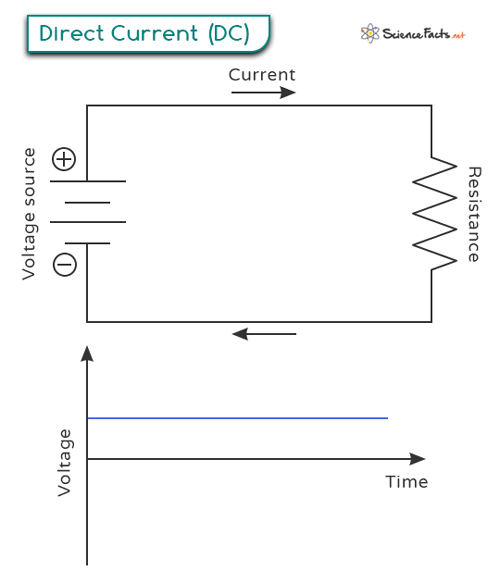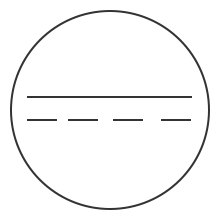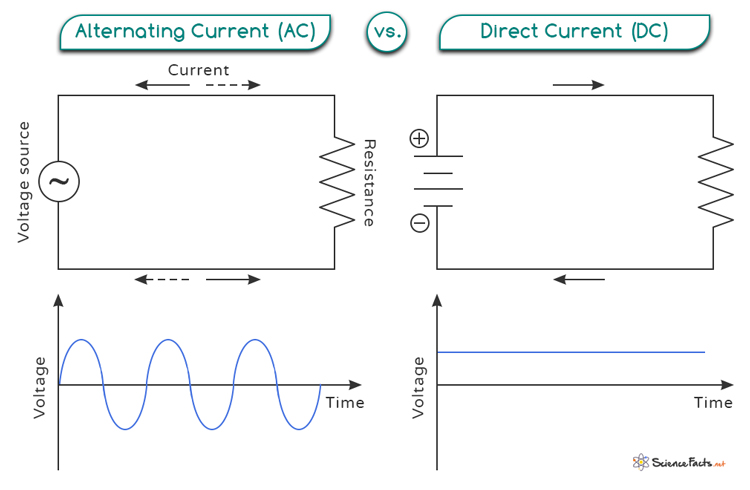Direct current refers to the continuous flow of electrons from a region of high electron density to a region of low electron density. In a battery circuit, direct current is due to the constant flow of electrons from the negative terminal to the positive terminal through the circuit. When a direct current flows through a circuit, it encounters various components, such as resistors, capacitors, and inductors, all of which influence its behavior. Resistors restrict current flow, while capacitors and inductors store and release energy. The flow of direct current is governed by Ohm’s Law, which states that the current (I) flowing through a conductor is directly proportional to the voltage (V) applied across it and inversely proportional to the resistance (R) of the conductor. This relationship can be represented by the equation I = V/R.
Who Invented Direct Current
Direct Current Symbol
Examples of Direct Current in Everyday Life
Alternating Current vs. Direct Current
To provide a clear overview of the differences between alternating current and direct current, here is a concise comparison table: Both alternating and direct currents have their distinct advantages and applications. Alternating current’s efficiency in long-distance transmission and ease of voltage transformation make it ideal for power distribution. On the other hand, direct current’s steady flow is indispensable for various electronic devices and renewable energy systems. A balanced understanding of these two types of electrical currents is essential for navigating the intricacies of our electrified world.


